- Easy slopes: 1.0 km
- Intermediate slopes: 9.2 km
- Expert Slopes: 500 m
- Ski routes: 4.7 km
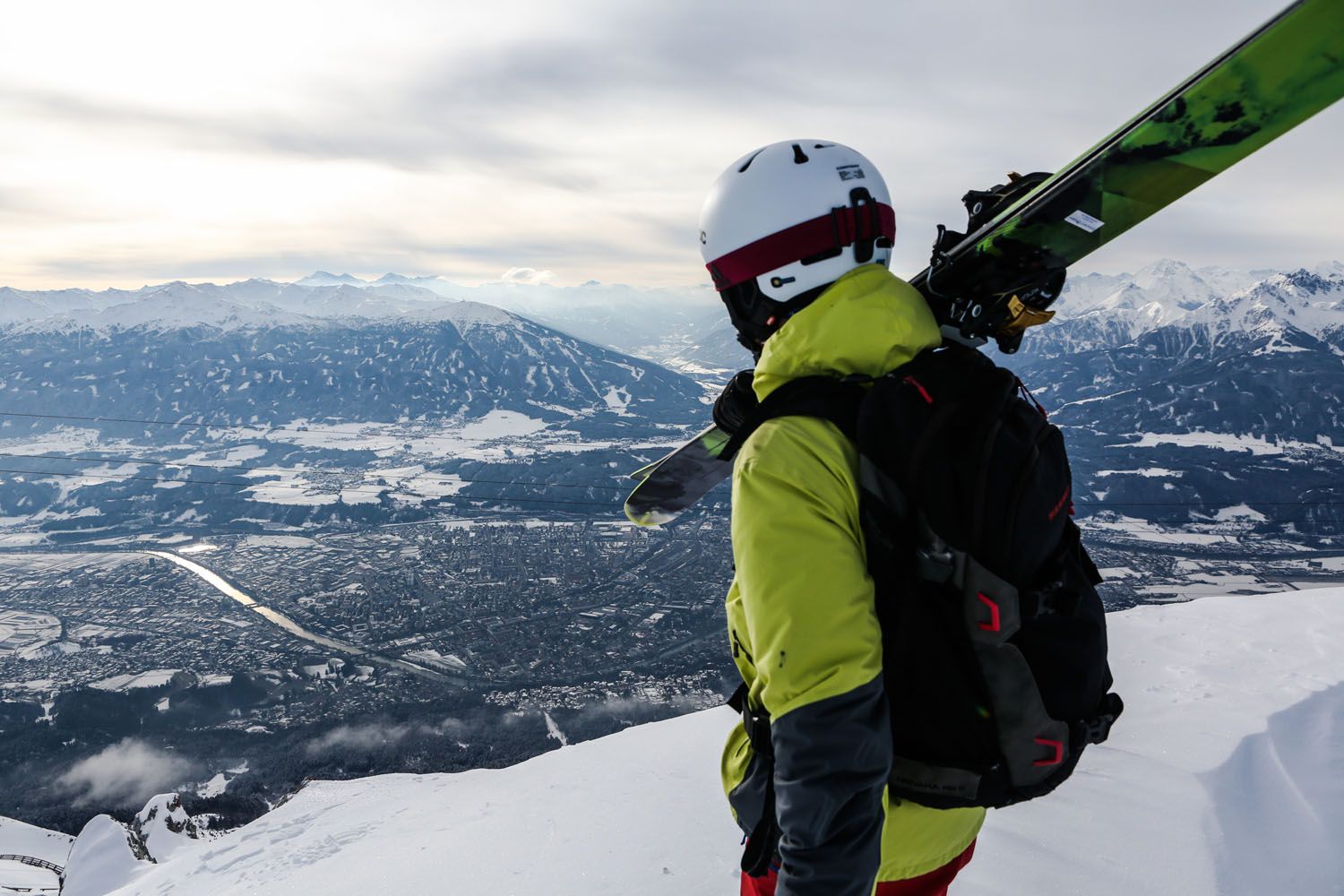
Nobody here is surprised that I cycle through the city with skis on my rucksack. In Innsbruck, many people do it in winter - even on weekdays. Students skip lectures, office workers take time off work, teachers move their gym class to the ski slopes and people of retirement age are the ones with the most skiing days per season here anyway. I am now also one of these ski-mad residents of Innsbruck. I park my bike just a snowball's throw away from Innsbruck's old town at the Hungerburg cable car. A ski instructor in a red ski suit is standing next to the escalator that leads to the cable car. He greets me. We talk briefly about how practical it is for him to work as a ski instructor above the city - in the ski area on the Nordkette, which is already being touched by the morning sun a kilometre and a half further up.
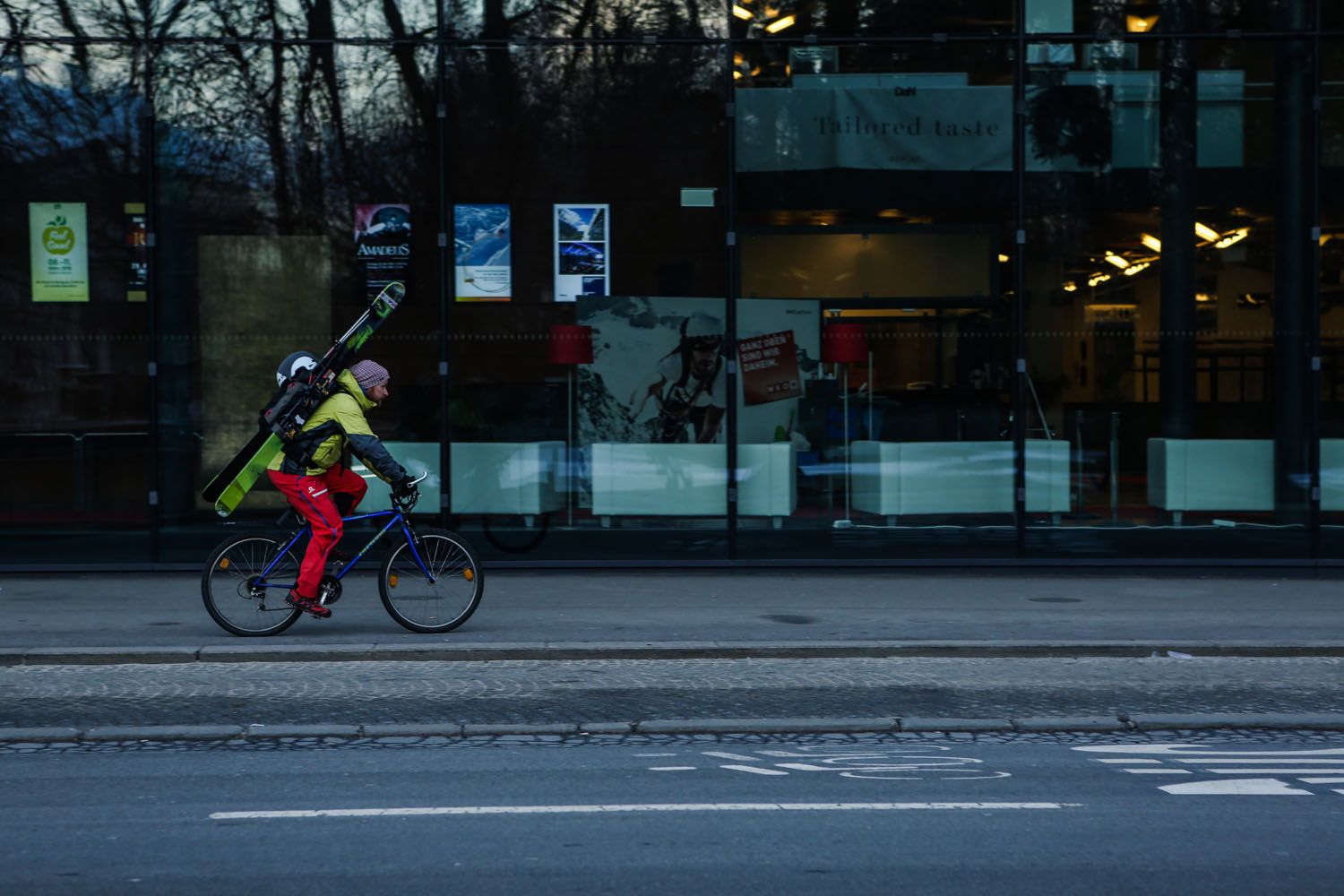
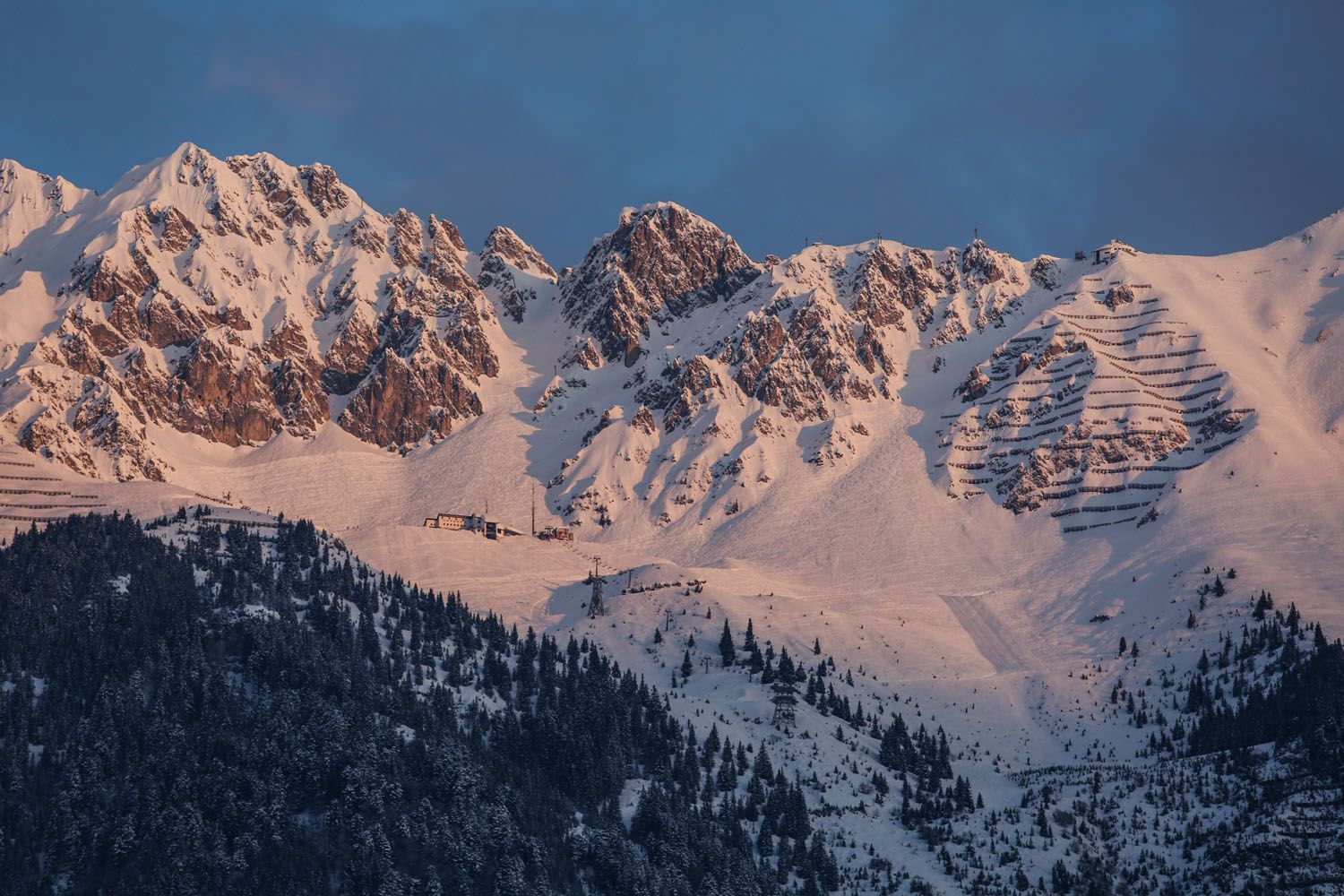
The Hungerburgbahn, designed by the late Zaha Hadid, has been with me since I moved to Innsbruck in 2012. For me, the Hungerburgbahn is the "Stairway to Heaven" - loosely based on the Led Zeppelin song of the same name. When the snow conditions are good, I set off on my touring skis in the direction of Seegrube as soon as I arrive at the Hungerburg. Today I don't do this and get straight into the Nordketten cable car, which takes me up to Seegrube. As Innsbruck shrinks with every metre of ascent, I wonder what the snow conditions in the Karrinne will be like today.

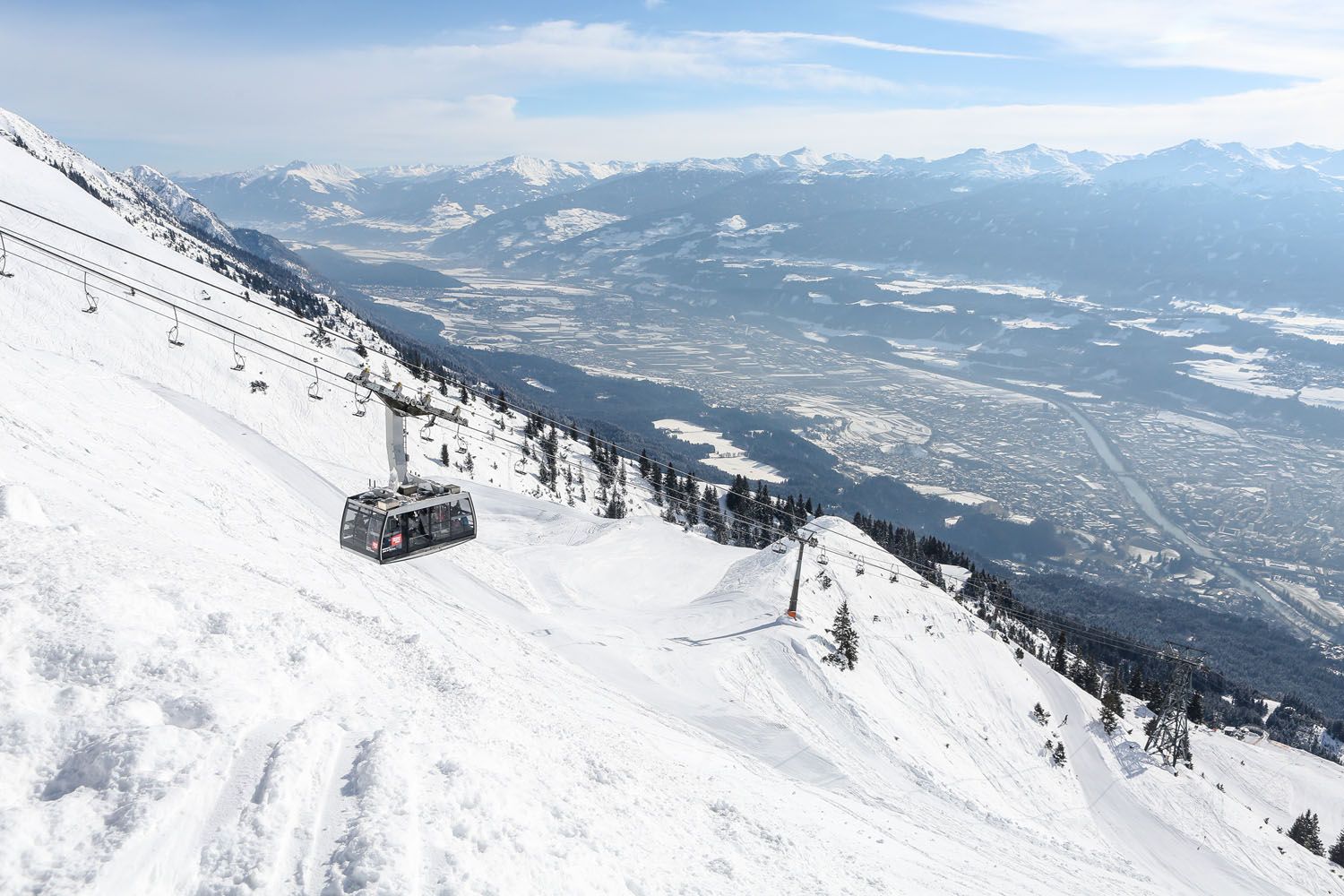
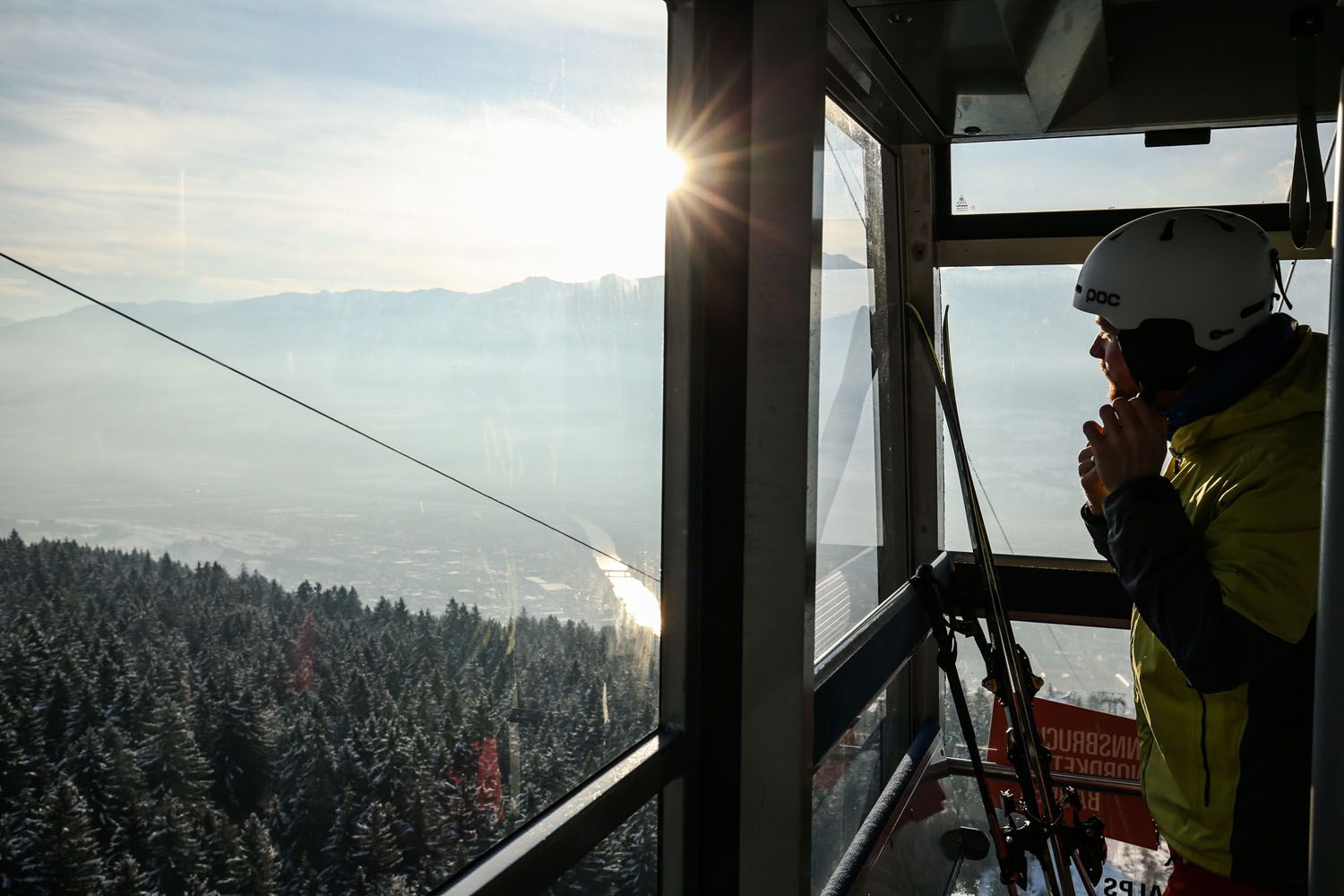
I have reached the Seegrube, but my first intermediate destination for today is a few hundred metres higher up. I immediately board the next gondola lift, which floats from the Seegrube up to the 2,300 metre high Hafelekar. The snow sticks to the rocks. Off-piste skiers have left their tracks in the steep gullies in between. A nightmare for people who are only on the piste, a dream for freeriders. I switch on my avalanche transceiver for safety, even though I know that the avalanches here are regularly blown off by the lift operators and that there is a low avalanche warning level today. On the Hafelekar, an icy wind whips into my face. Despite wearing warm gloves, my fingers are freezing as I trudge to the start of the gully. With a gradient of seventy per cent, it is one of the steepest ski routes in the world. Many an office and university lecture theatre is deserted on nice, fresh snow days because of this gully.
Not today. The reason for this is probably the quality of the snow. A touch of powder snow on a rock-hard base - the conditions for a descent in the gully could be better, but it should be enough for a good photo. The photographer accompanying me struggles over the frozen moguls on his snowboard. I do my best to make smooth turns. But the highlight here is the view anyway. I stop again and again to enjoy the view of the city. The Patscherkofel, Innsbruck's real "local mountain", rises up opposite. I want to go there today and test out the gondola lift that opened at the end of 2017 - time permitting.
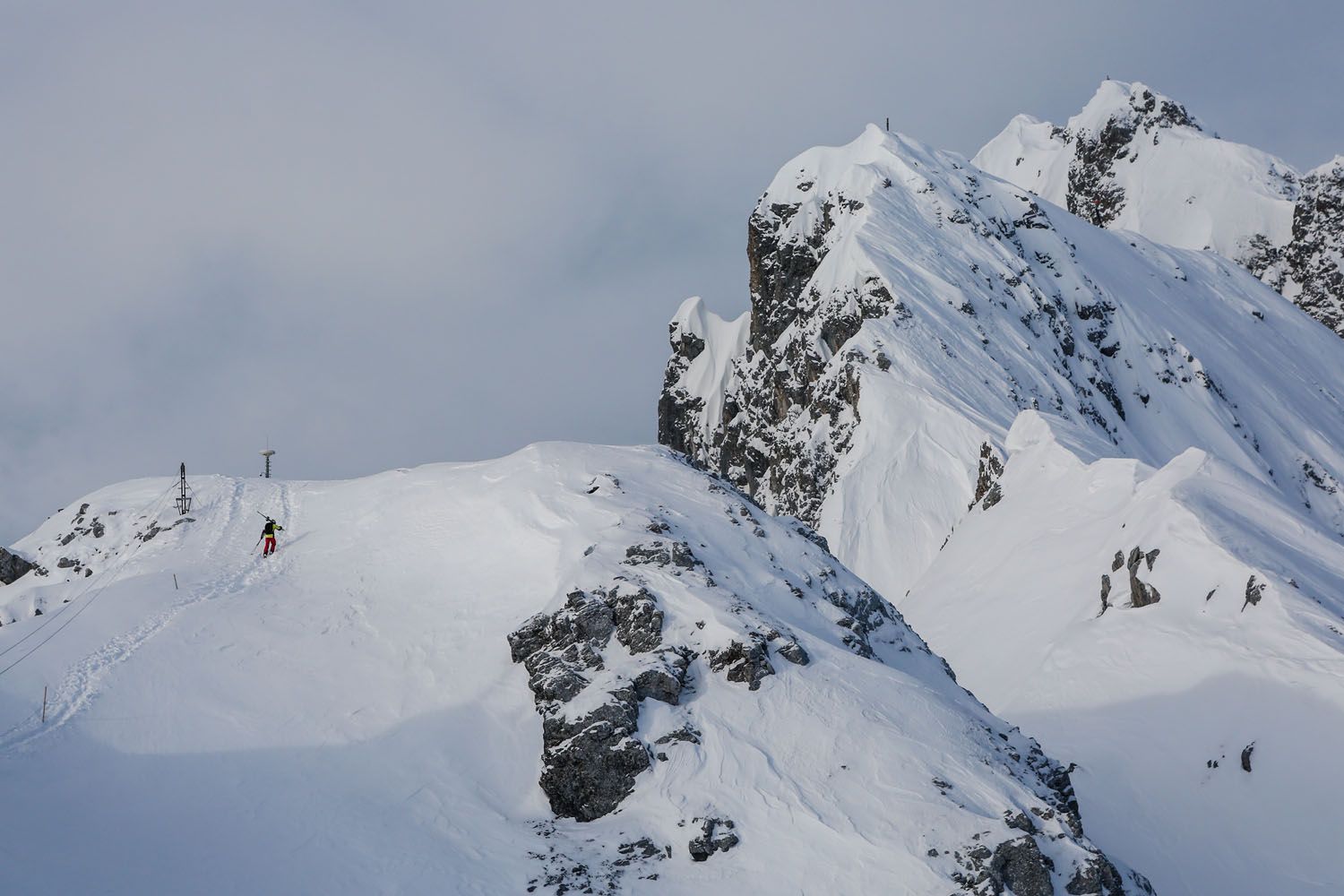
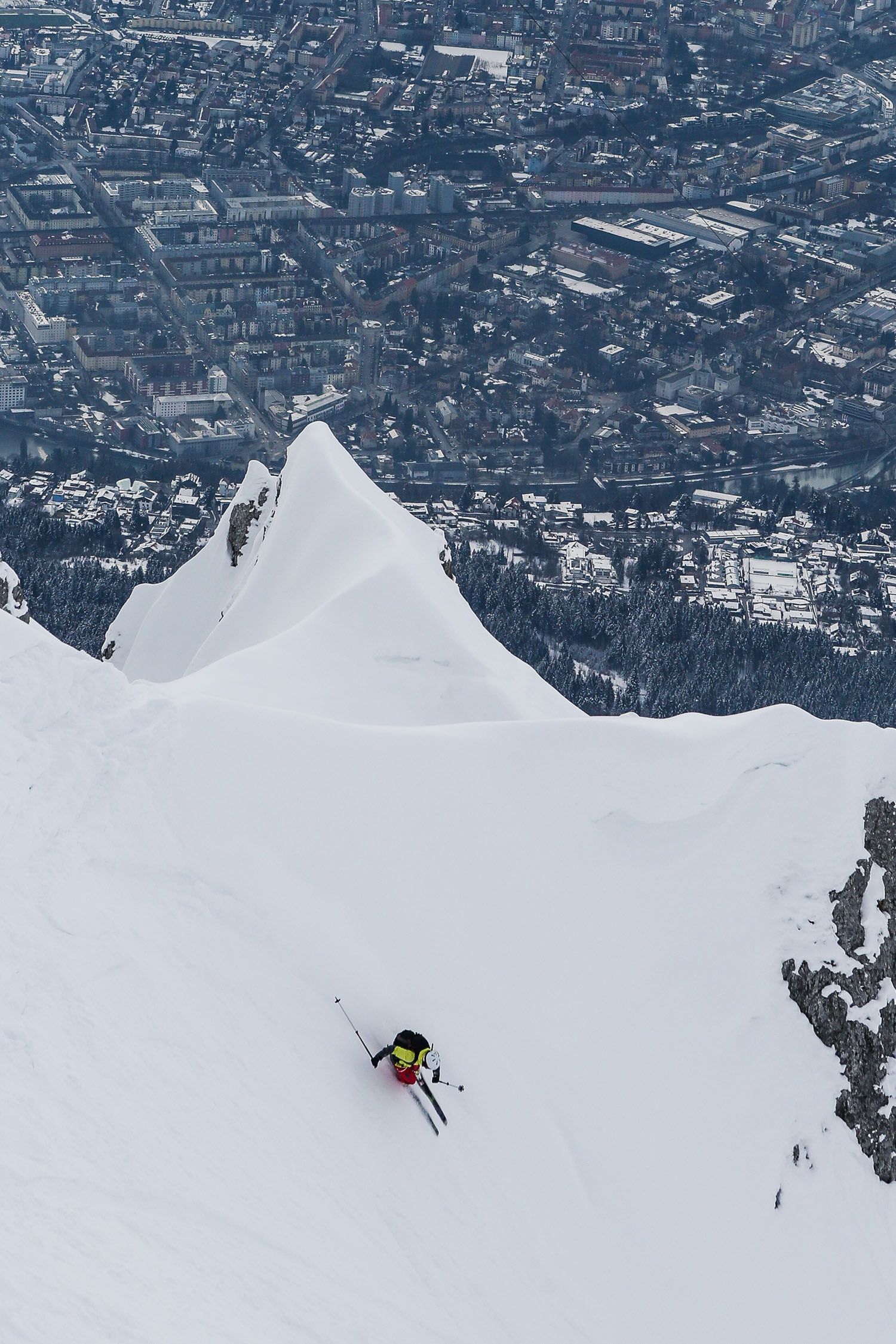
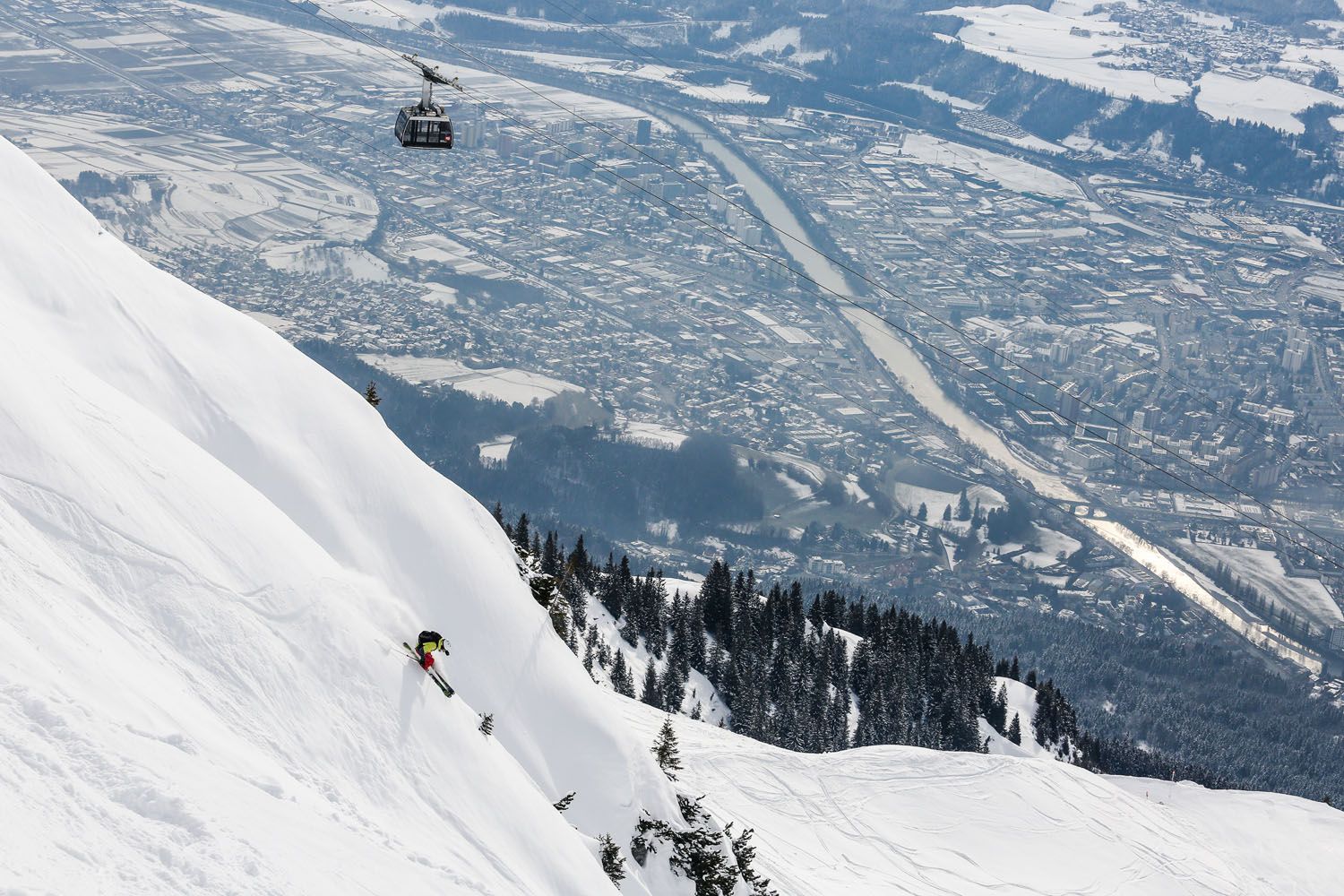
The Karrinne spits me out at the Seegrube. Groups of children slide down the beginners' piste behind ski instructors. Right next to it, moguls and jumps rise up out of the snow - the legendary Nordkette Skyline Park. A freeskier jumps, spins headfirst through the air and lands back on his feet like a cat. On the way back to the chairlift, he passes the "Cloud 9 Bar". The wind blows soft lounge music into my ears. I order a lemonade at the snow bar. "There's a DJ in the igloo every Friday evening," says the barman, signalling with a follow-up "only every Friday" that, in his opinion, it could be even more often.
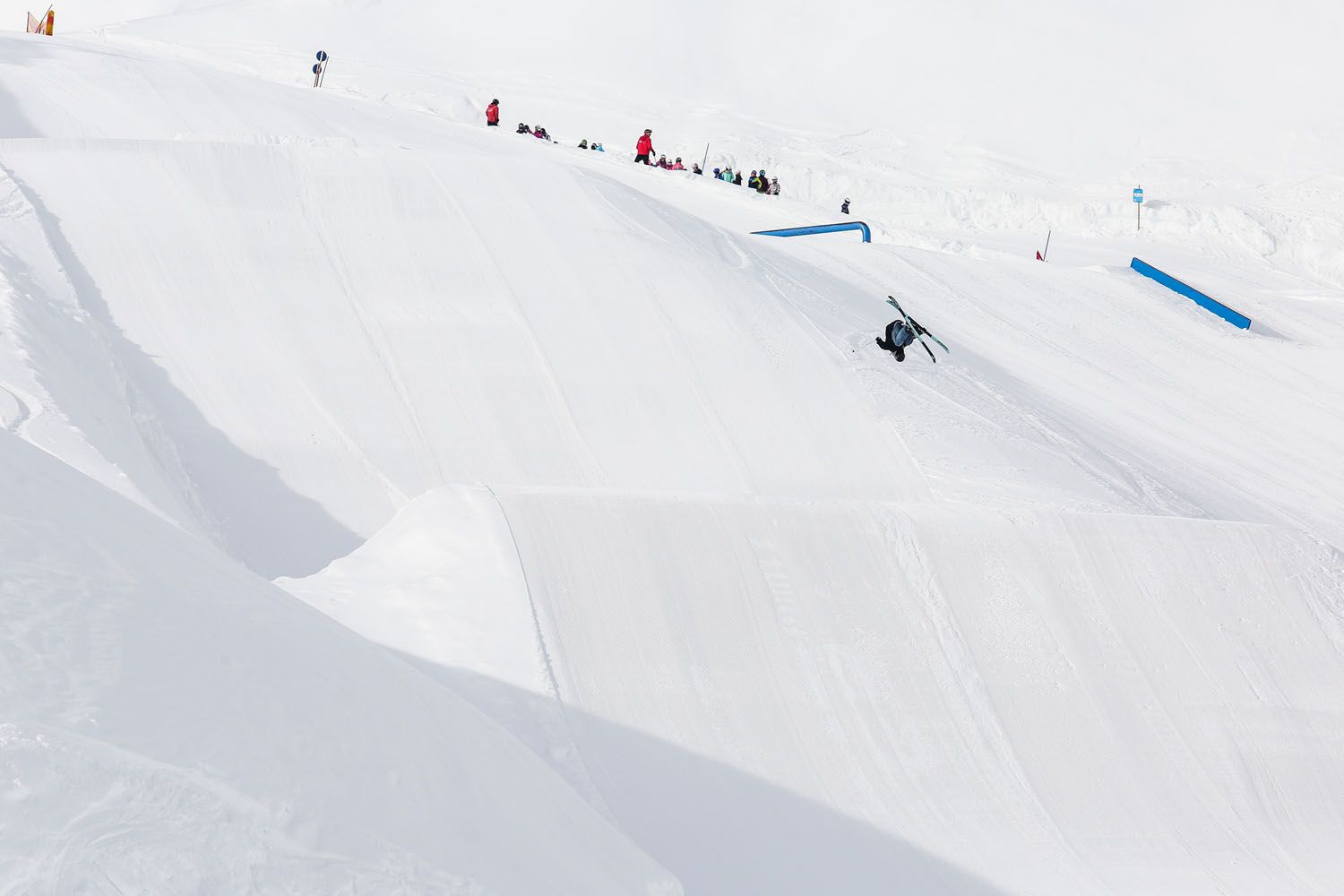
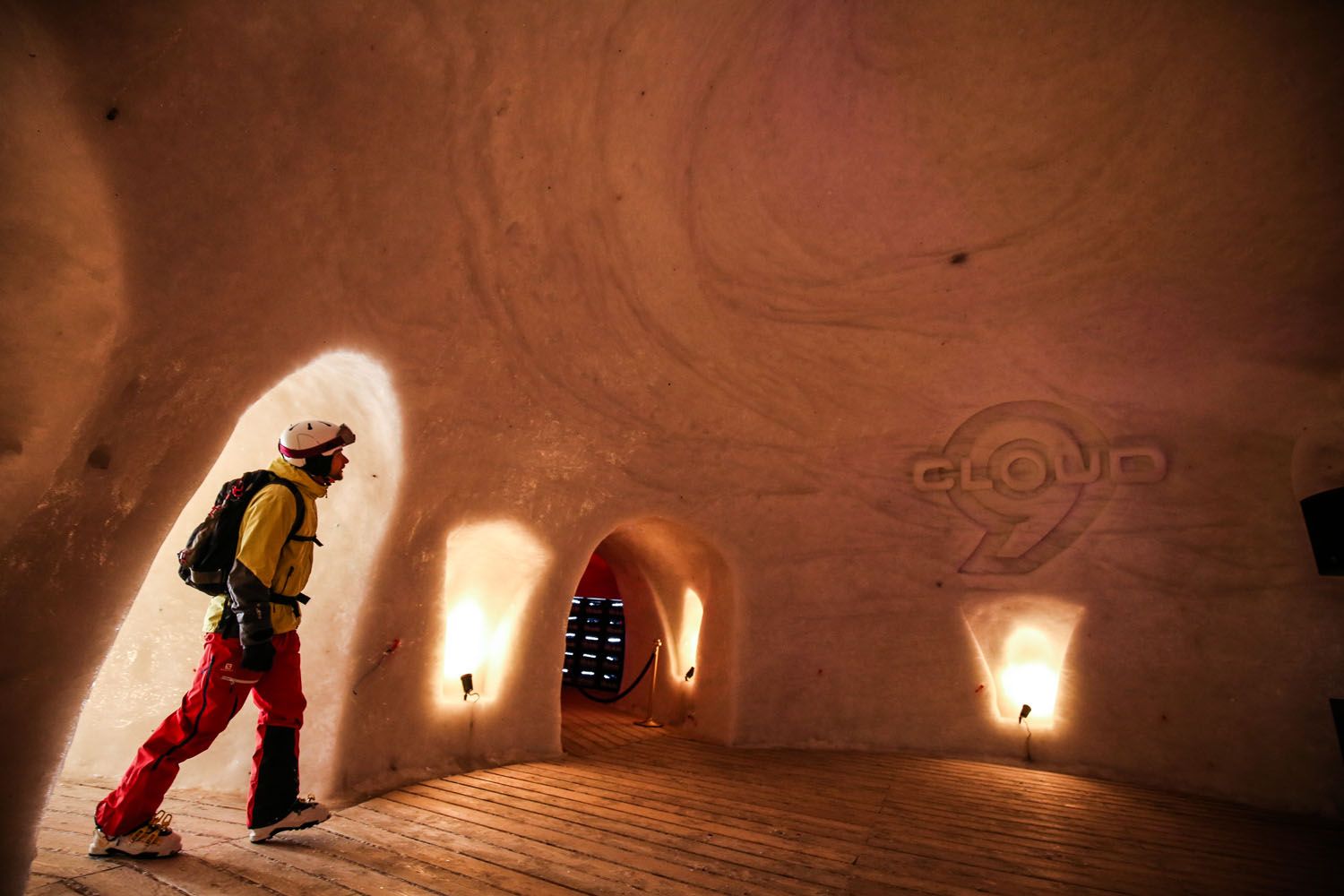
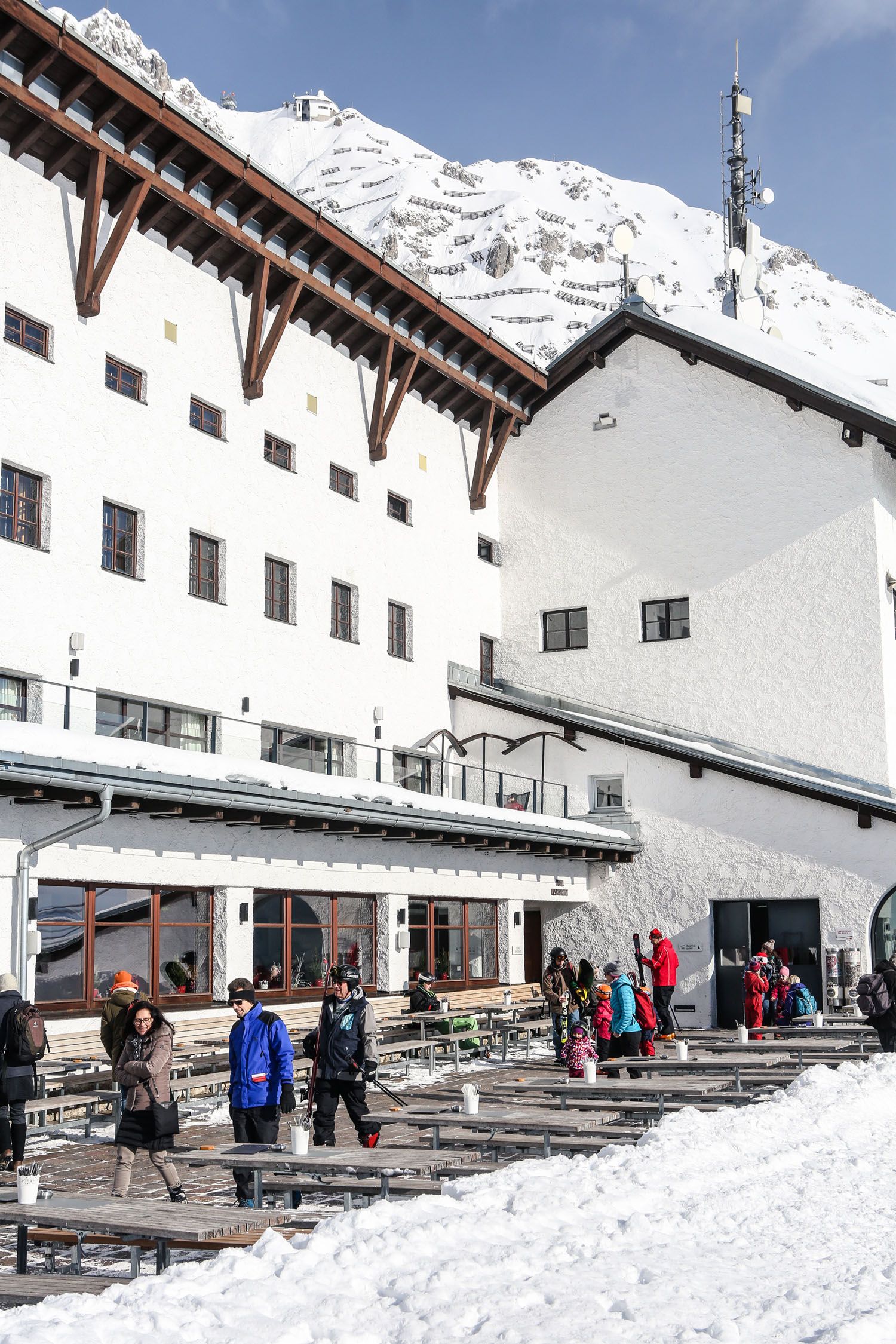
From the Seegrube, I ski directly down to the Hungerburg. There are so many downhill options here that I'd rather not list them. Besides, the die-hard locals would never forgive me if I gave away "their" runs. The Nordkette is one of the few ski resorts without snowmaking facilities, so you can only ski down the official ski run to Hungerburg if there is enough snow. Today is such a day.
When I get to the Hungerburg, I have a cappuccino with Leo Baumgartner in the "Hitt & Söhne" café. He runs this cool mix of café, bar and shop for ski freaks, locals and tourists. When choosing a name for his café, Leo was inspired by a striking rocky outcrop on the Nordkette mountain range, which bears the name "Frau Hitt".
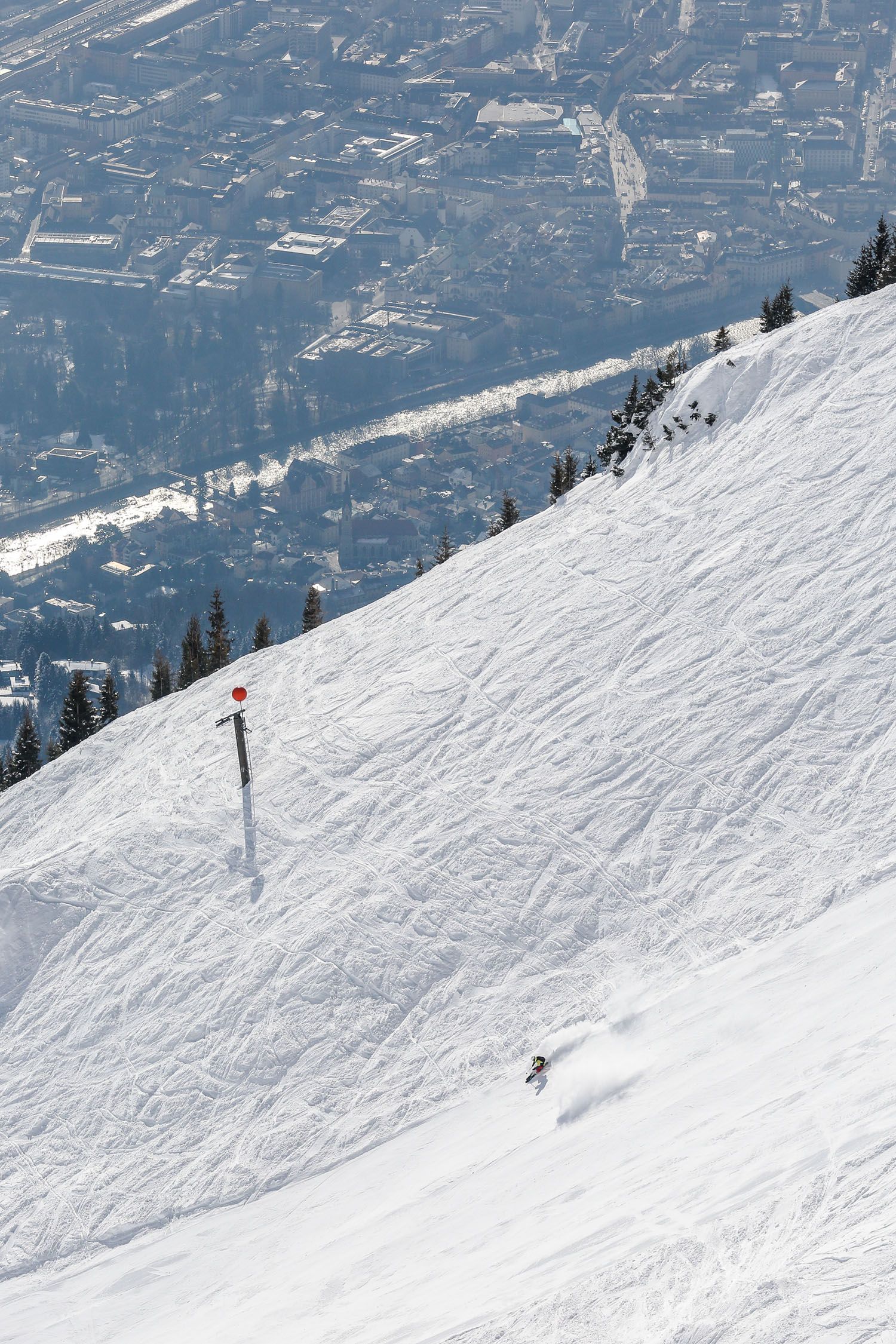
My day of skiing continues as I stroll to the bus stop just round the corner. Bus route J departs here every ten minutes. It connects Hungerburg with the valley station of the Patscherkofel cable car. Winter sports enthusiasts travel for free on this bus route. One last look up to the Nordkette. During the journey through the city, I can sit back for a few minutes. I strike up a conversation with three American tourists on the bus. They are also travelling to the Patscherkofel - but only for the beautiful view, not for the skiing.
Shortly after midday, the bus arrives at the valley station of the new Patscherkofel cable car. Ski courses scurry down the beginners' slope, children and tourists ride up on the drag lift. The new restaurant, aptly named "Das Hausberg", is well frequented, and right next door there is a large sports shop with ski service and everything that goes with it. I hop straight into one of the new ten-person gondolas, which whisk me up to an altitude of almost 2,000 metres in just fifteen minutes. A huge step forward compared to the old aerial tramway, where an hour's wait was normal on busy days. At the top station, a couple strap on their touring skis and continue towards the summit, which is around 300 metres higher up from here. Several signposted routes for ski tourers lead from the valley station all the way to the top, and you can shorten the route with the gondola if you prefer.
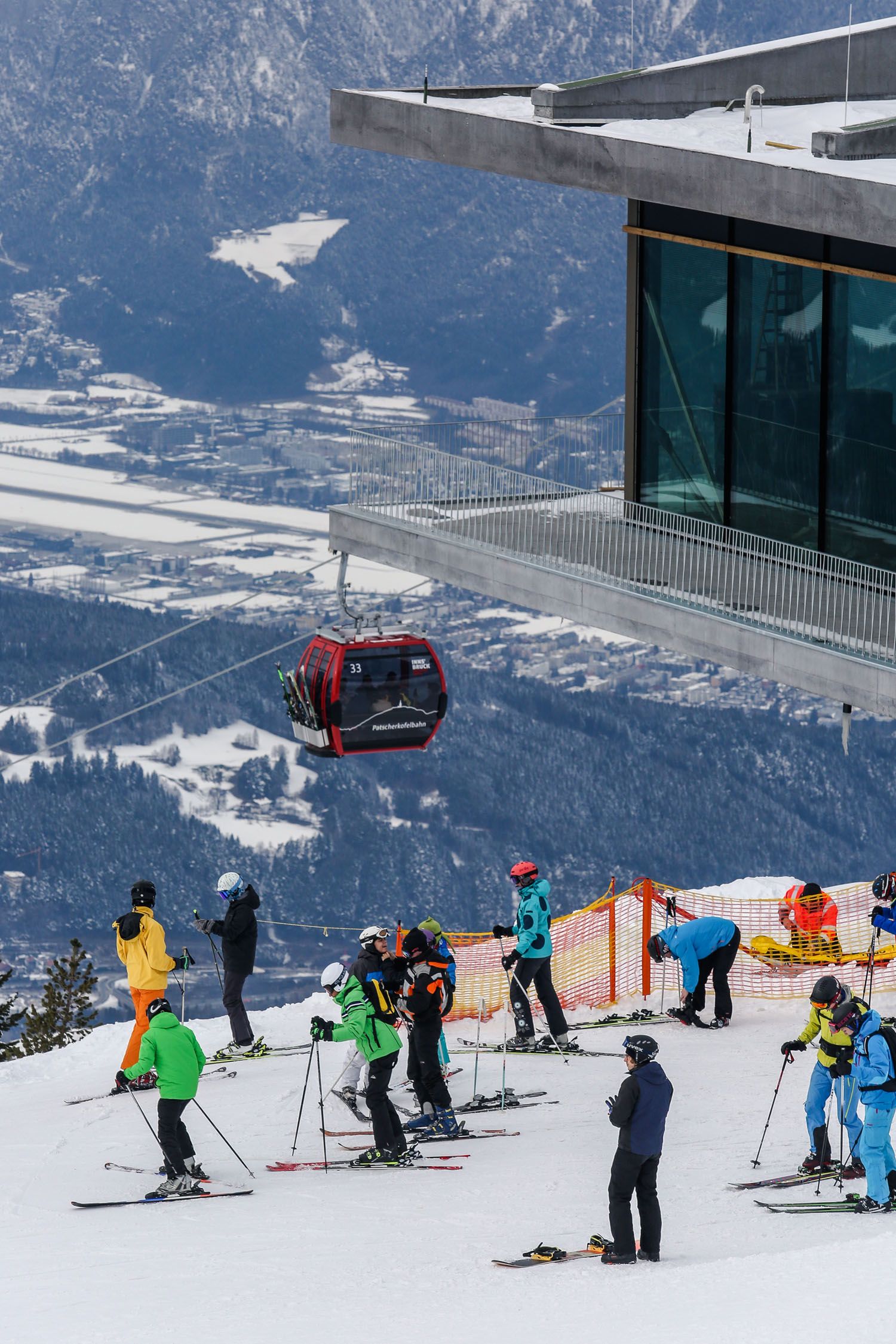
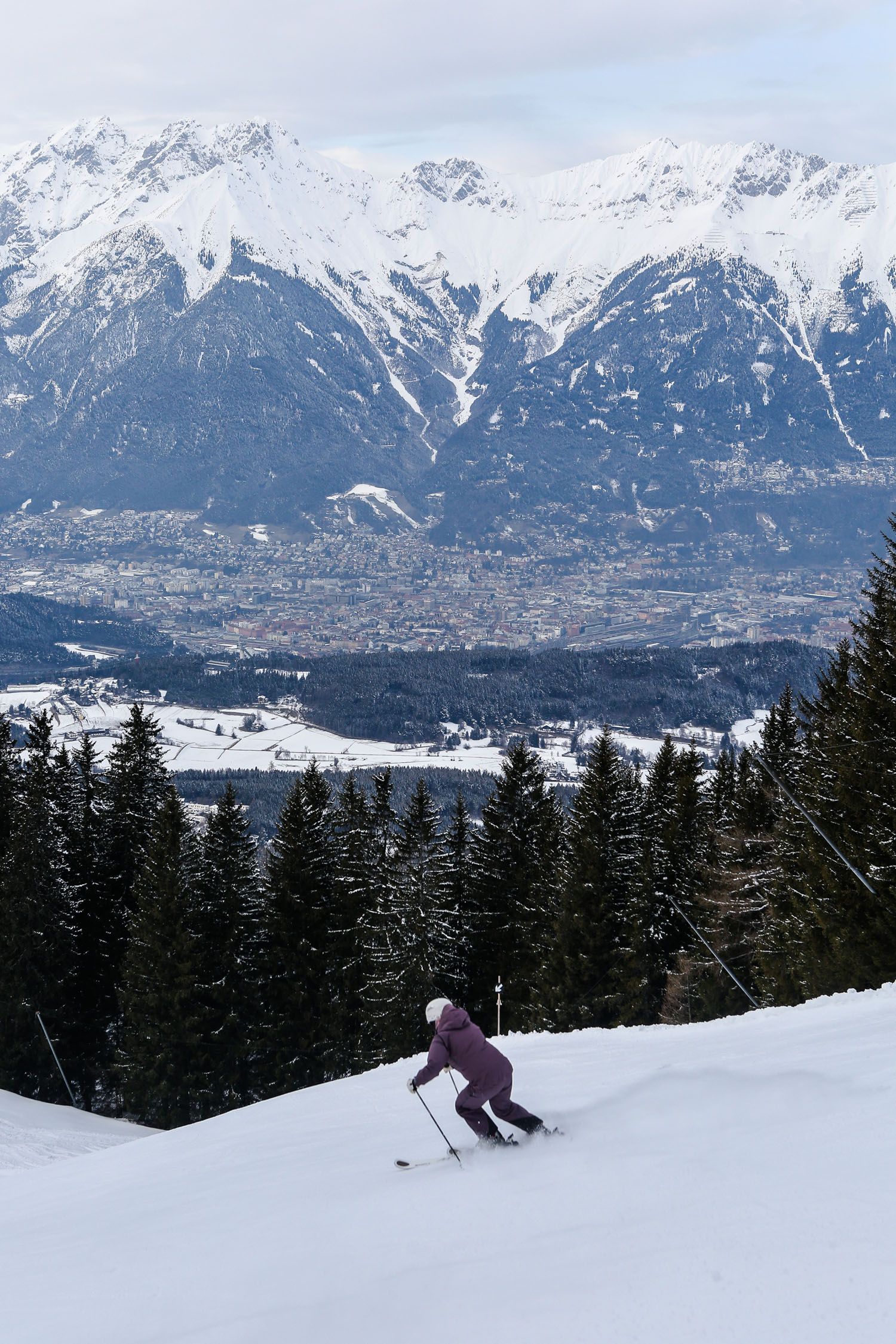
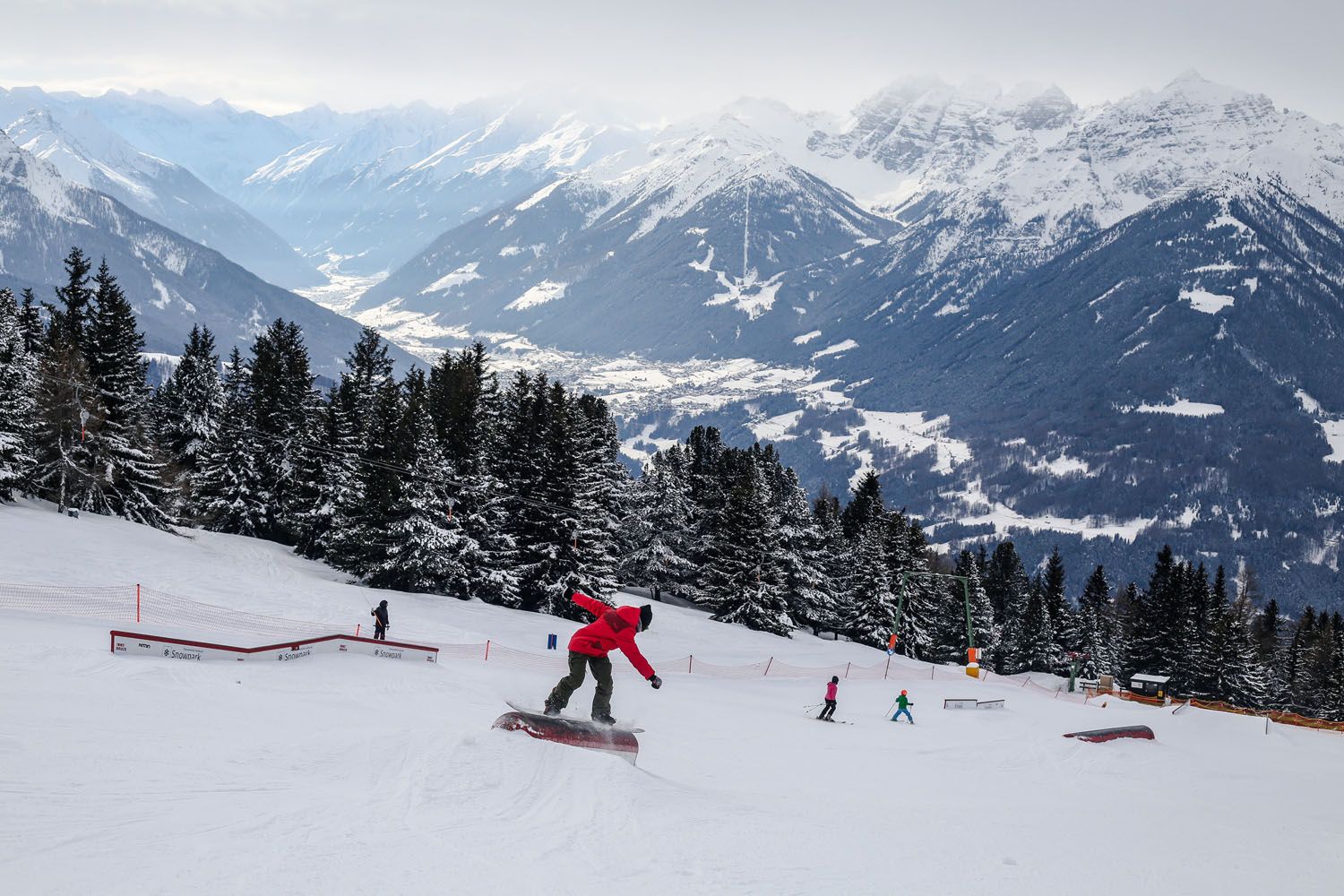
For many, the Patscherkofel shelter next to the mountain station is a favourite place to stop for a bite to eat. This time I choose a lesser-known stop, the Patscher Alm. Keep to the left and turn left off the piste just before the middle station - and you're in what is probably the cosiest stop in the ski area. Alpine innkeeper Heidi Kaltschmid offers a small but very good selection of dishes. The alpine toast and cheese dumplings taste excellent, but I am most impressed by the homemade apricot cake. Heidi and her husband bring everything they need up by car every autumn, and in winter they transport the fresh food in their rucksacks and on skis up to the mountain pasture. Heidi tells me that there is no other way to get here in winter. On Thursdays, the Patscher Alm is open until half past nine in the evening, when ski tourers in particular like to visit.

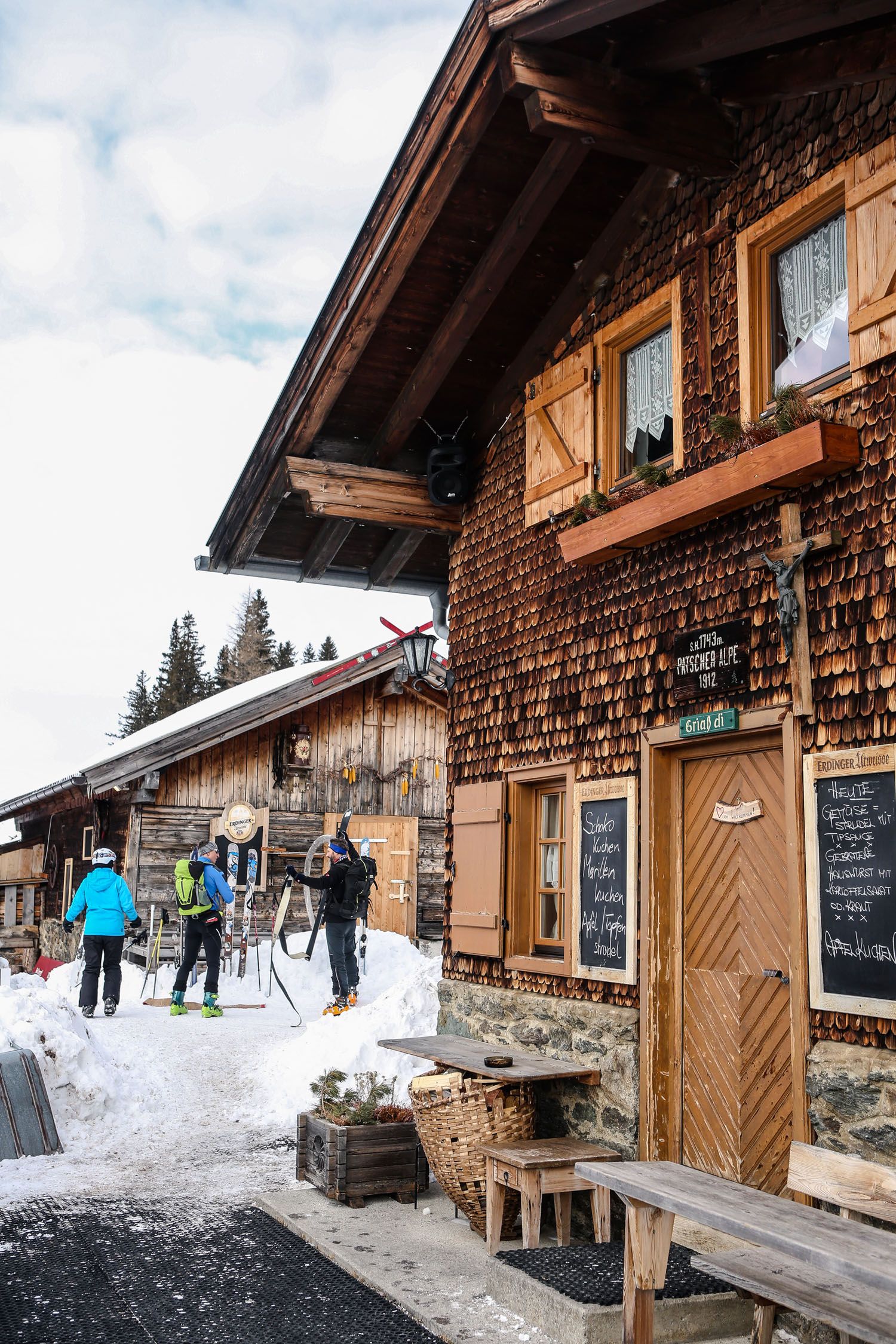
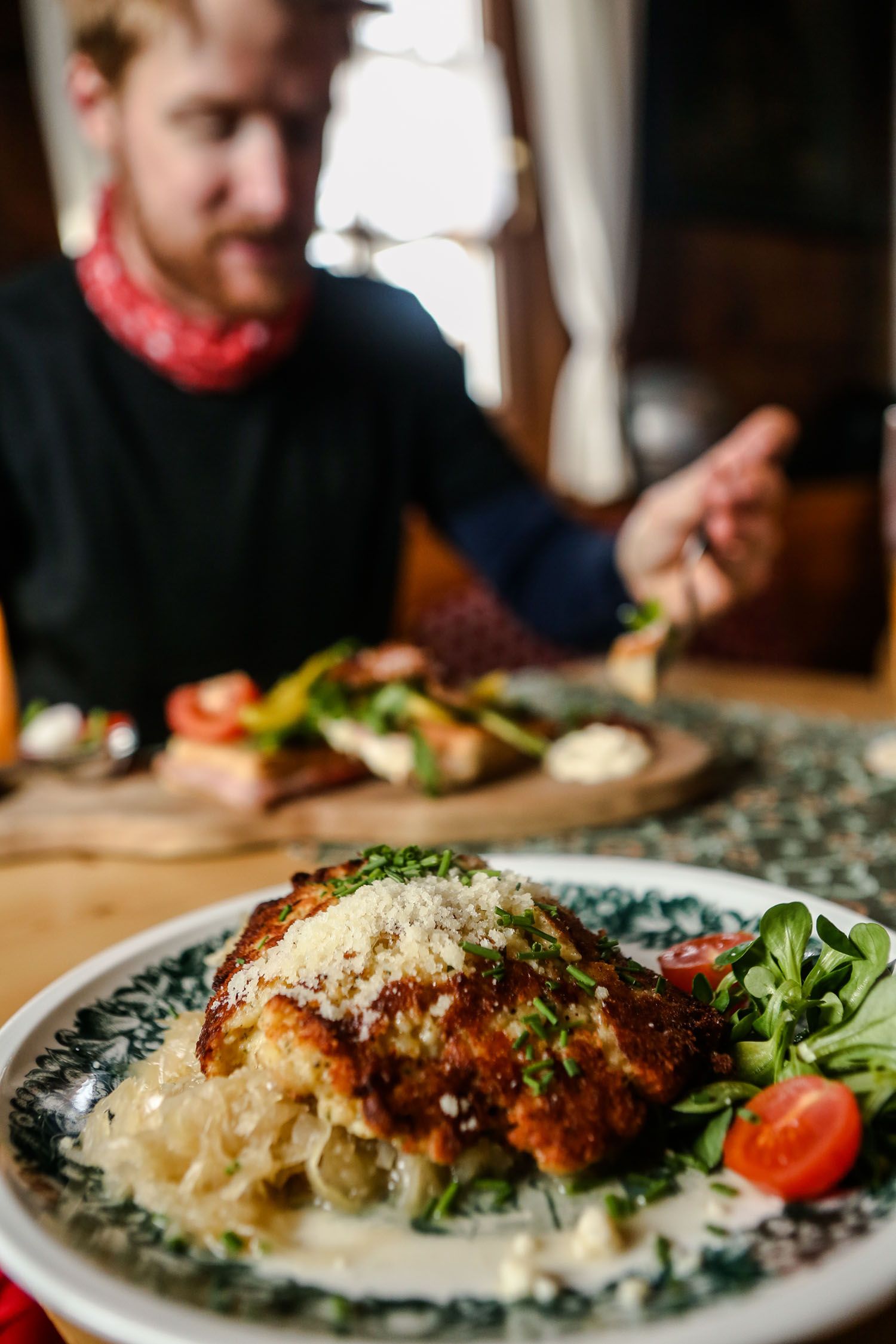
I make my way back down into the valley. Good skiers particularly appreciate the three-kilometre downhill run on the Patscherkofel, where the Austrian Franz Klammer won Olympic gold in 1976. I take it a little slower and swing down at the valley station after a good ten minutes. The day's skiing is over, but the evening has only just begun, which is also the great advantage of skiing in Innsbruck - the bus takes you quickly back to the city centre.
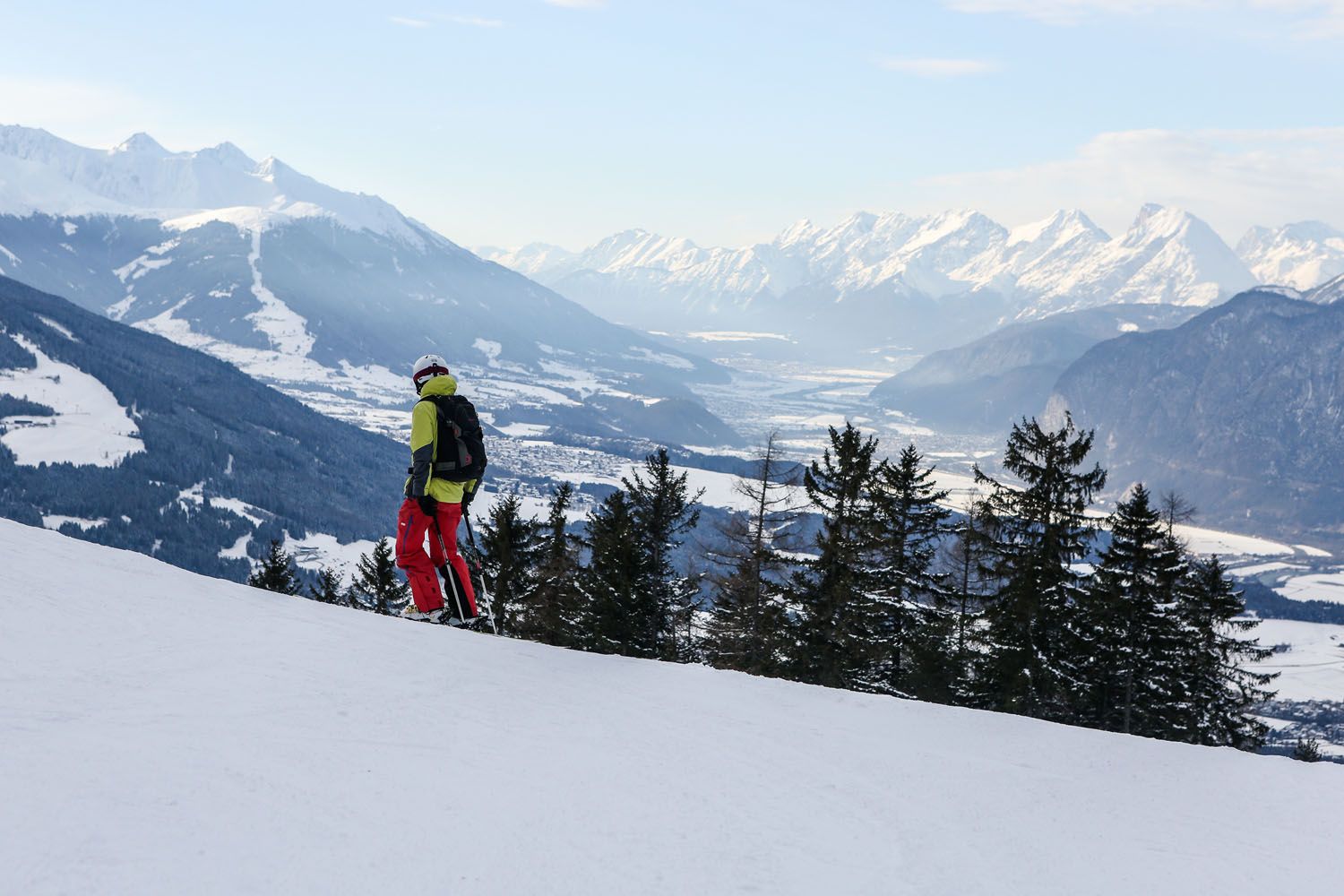
Quickly stow the skis at home and off to the Moustache for a beer and a falafel platter. Or to the "Kater Noster" for an "Innsbruck Mule". If you want to eat perhaps the best burrito in town, why not pop into "Machete"? These three favourite places of mine are all within five to ten minutes' walking distance. If you see people sitting around in ski outfits and hear them talking shop about the "zache Karrinne" or the "lässig Kofeltour", you can now join in the conversation. Because you know: that's normal - here in Innsbruck.